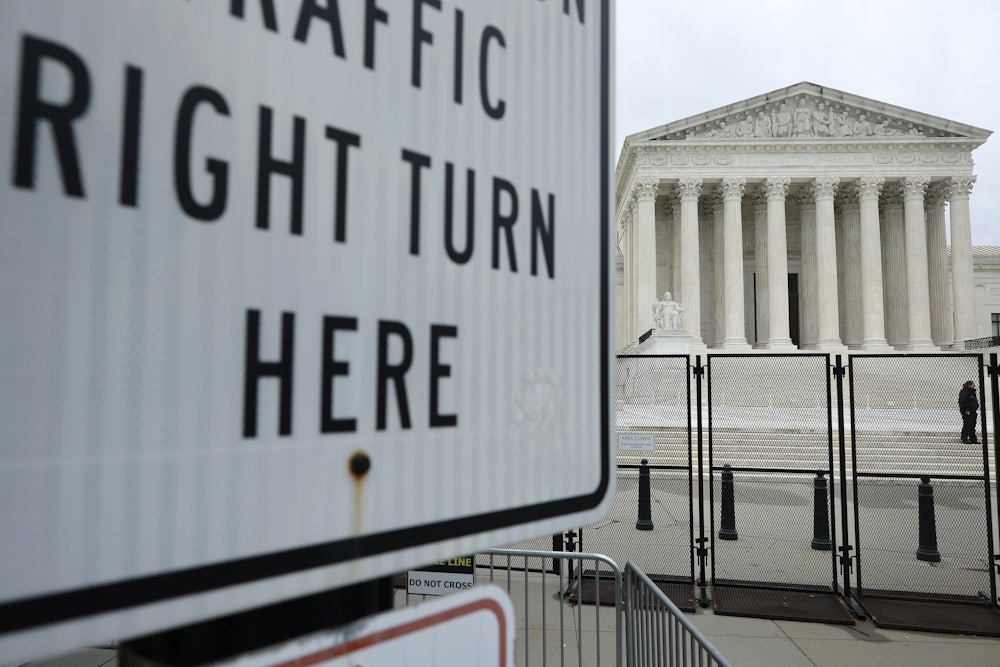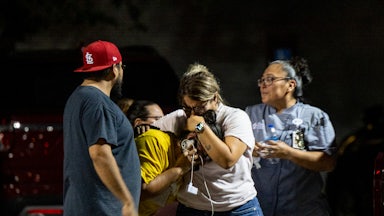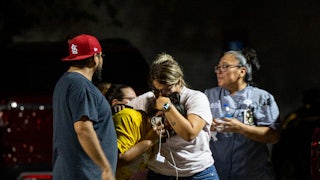The Supreme Court did something strange last week: It didn’t hand down rulings in any of its argued cases. Many weeks of the year go by without Supreme Court decisions, of course, but that tends to be less common in the month before the court wraps up its annual October-to-June term. The court is now entering the final stretch of its most turbulent term in recent memory with a major backlog of prominent cases.
Is behind-the-scenes friction stemming from last month’s leak of Justice Samuel Alito’s draft decision in Dobbs v. Jackson Women’s Health Organization affecting the justices’ work? There are some signs of sluggishness in their usual output. Bloomberg’s Greg Stohr noted earlier this week that the court has only handed down decisions in fewer than half of its argued cases this term—the ones that go through the full briefing and oral arguments process. Using numbers from SCOTUS stats guru Adam Feldman, Stohr reported that this is the furthest behind that the court has been on deciding cases by this point in the calendar since at least 1950.
As a younger legal journalist, I used to occasionally have stress dreams where the Supreme Court would hand down all its major decisions on the same day, and I would have to write about each of them simultaneously. If I were a conspiracy theorist, I would almost wonder if the justices were intentionally planning something like that to get back at the press corps for violating the sanctity of its inner workings with the Dobbs leak. But there are two far more likely explanations for the court’s eleventh-hour rush this year.
One possibility is that the justices have been busy with the unusual number of major cases on the shadow docket this term. In recent years, this docket went from being a mechanism to handle emergency and administrative motions from the lower courts to a venue for deciding consequential legal disputes. While the justices didn’t hand down any rulings in argued cases this week, they did block Texas from implementing its new social media censorship law in a 5–4 ruling. Shadow-docket cases can look deceptively simple because they almost never come with written opinions by the majority. But the justices do circulate dissents and concurring opinions in them from time to time, as three of the dissenting justices did here, and deliberate over the outcome on a hastened schedule.
Complicating matters for the court this year is the added burden of election-related cases on the shadow docket. The court hears its fair share of these cases every two years, of course. But this term also coincided with the once-in-a-decade redistricting process that followed the 2020 Census. That confluence brought an additional layer of legal battles to the shadow docket: The justices dealt with redistricting cases from Alabama, Wisconsin, and other states. Their work here might not yet be done, either, with Ohio’s redistricting mess now drawing in the federal judiciary after a three-judge panel ordered the state to use maps that the Ohio Supreme Court had ruled unconstitutional.
The other factor here is that the remaining cases aren’t easy ones—insofar as any Supreme Court case is ever “easy,” that is. Looming over everything else is Dobbs v. Jackson Women’s Health Organization. That case centers on a legal challenge to Mississippi’s 15-week ban on abortion. It was already fairly clear that the court was poised to significantly curtail access to the procedure; the only real questions were by how much and how quickly they would do it. Thanks to the historic leak of Alito’s draft opinion, it now appears virtually certain that they’ll do it in one fell swoop, overturning Roe v. Wade outright and allowing states to ban most abortions for the first time in almost a half-century.
Thanks to the leak, we have a better understanding of the Dobbs timeline than any other case on the court’s docket right now. Alito circulated his initial draft to the other justices in early February. Politico reported on May 11 that the three dissenting justices had not yet circulated their dissenting opinion(s) in the case. Once they do, Alito may circulate a second draft that addresses their criticism or makes other changes. Given the gravity of the situation and the extraordinary stakes of Dobbs, it would not be surprising if this one went down to the wire before the court’s de facto recess in early July.
Another case that drew renewed interest in recent weeks is New York State Rifle and Pistol Association v. Bruen. The court is widely expected to rule that New York’s current scheme for obtaining concealed-carry permits won’t survive a Second Amendment challenge brought against it by local gun owners. As I noted last week, however, how exactly the justices craft the decision could have far-reaching implications. The Supreme Court has not tackled the scope of the Second Amendment’s protections since the justices found an individual right to bear arms in that amendment more than a decade ago.
A narrow ruling in Bruen that focuses on the peculiarities of New York’s scheme and its arbitrary enforcement would not directly imperil other restrictions on when and how Americans can carry firearms in public. A more expansive ruling by the justices on the Second Amendment’s scope, however, could invite legal challenges to a host of other carry regulations, an outcome sought by gun rights activists and feared by gun-control groups. Since the Supreme Court has spoken so infrequently on gun rights, every word and phrase they use will matter even more for when lower courts resolve future disputes.
As abortion rights and gun rights are often central issues in American politics, those two cases are likely to garner the lion’s share of public attention. But there is no shortage of other cases where the court could deliver consequential rulings in the weeks ahead. The justices heard oral arguments in March in West Virginia v. Environmental Protection Agency. At issue in that case is a phantasmal back-and-forth battle between the EPA, power plants, and red-state attorneys general over a defunct carbon emission rule drafted two presidencies ago.
There are two big questions in the case. First, can the EPA regulate carbon emissions under the Clean Air Act? The Supreme Court appears poised to say no, which could make it all but impossible for the U.S. to meet the international climate change commitments to which it has agreed. Second, how will the Supreme Court say no if it does? Some of the conservative justices have invoked something called the major-questions doctrine to rule that federal agencies are acting outside of their congressionally authorized mandates, which those justices happen to interpret pretty narrowly these days. If all of that sounds like a boring milestone in the conservatives’ campaign against federal regulatory agencies, then the good news is that it will all matter a lot less if Earth becomes uninhabitable in the next century.
One area where the court may surprise everyone again is on tribal sovereignty. The justices heard two cases in February on the matter, one involving double jeopardy for prosecutions by tribal law enforcement and another that addresses tribal gaming powers on a reservation in Texas. Both of those rulings could be accompanied by the court’s decision in Oklahoma v. Castro-Huerta, a follow-up to its blockbuster 2020 ruling in McGirt v. Oklahoma. In McGirt, the Supreme Court effectively recognized that roughly half of Oklahoma was still Indian Country, prompting a furious backlash from Oklahoma’s governor and some local officials. Whether the justices will narrow McGirt by expanding the states’ powers to prosecute some crimes on reservations—and the broader implications that would have for tribal sovereignty—is an open question after oral arguments last month.
Other major decisions may draw fewer headlines but still have a significant long-term impact. In Kennedy v. Bremerton School District, the court will likely rewrite or clarify (depending on who you ask) its past precedents on when and how school employees can pray on the job with students. Vega v. Tekoh is a curious case on Miranda warnings and Section 1983 that could signal whether a critical mass of conservative justices are now willing to let police not read suspects their rights under the now-famous warning. And in one of the many Biden v. Texas–es out there, the justices will weigh in on the Trump-era “remain-in-Mexico” policy and whether the current president can now unwind it.
The court has previously met tight deadlines when it found itself overloaded in the last term, and it probably won’t end up missing its end-of-term deadline at the end of June. A more interesting question is whether the last-minute flurry is good for the justices’ decision-making process. There is no reason why the justices need to leave town before the Fourth of July weekend other than Washington, D.C.’s abysmal climate. Indeed, the Supreme Court no longer actually goes into recess at the end of each term; the court technically stays in session year-round so that they can keep hearing shadow-docket cases in the “off-season,” so to speak. It’s impossible to say whether the eleventh-hour haste affects the quality of the court’s work, of course. One hopes that their desire to get these cases done on time won’t affect their ability to get them done right. Then again, by the time June ends, the matter of whether the high court fulfilled its obligations to justice is likely to be the subject of considerable debate regardless of whether they fulfill their obligations to the calendar.










